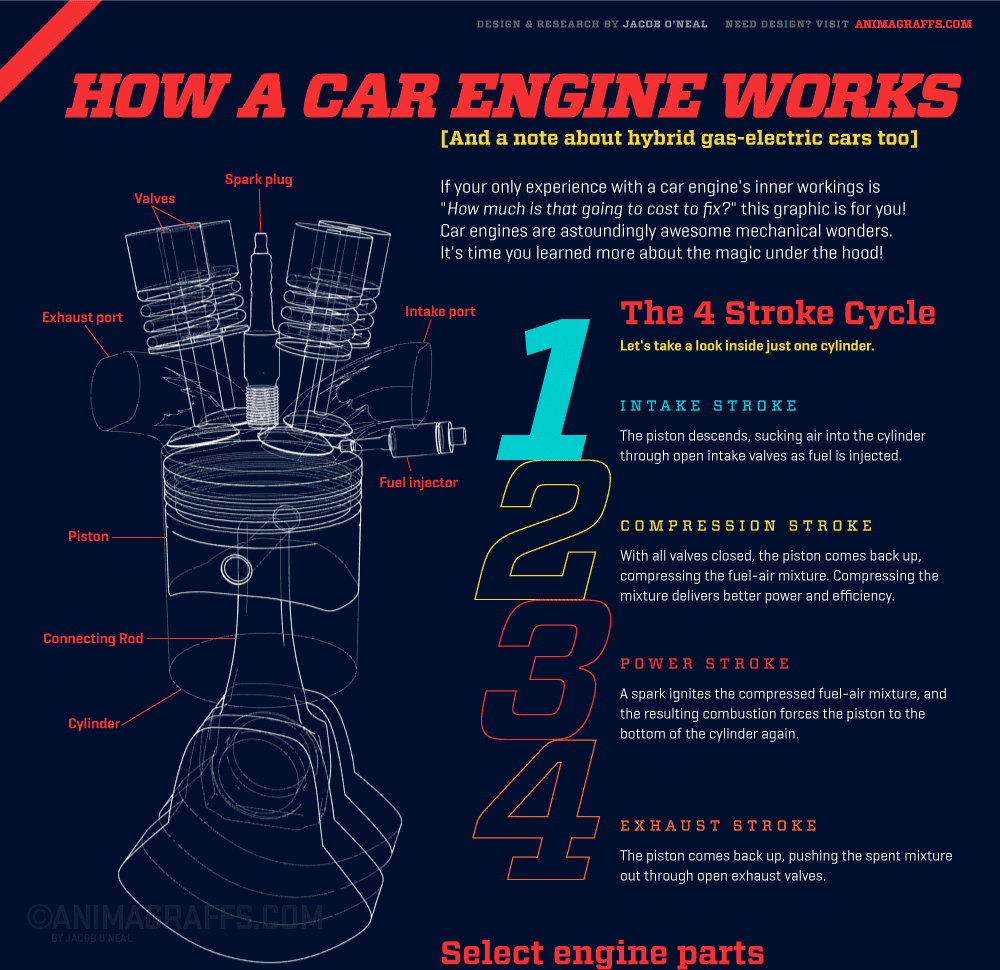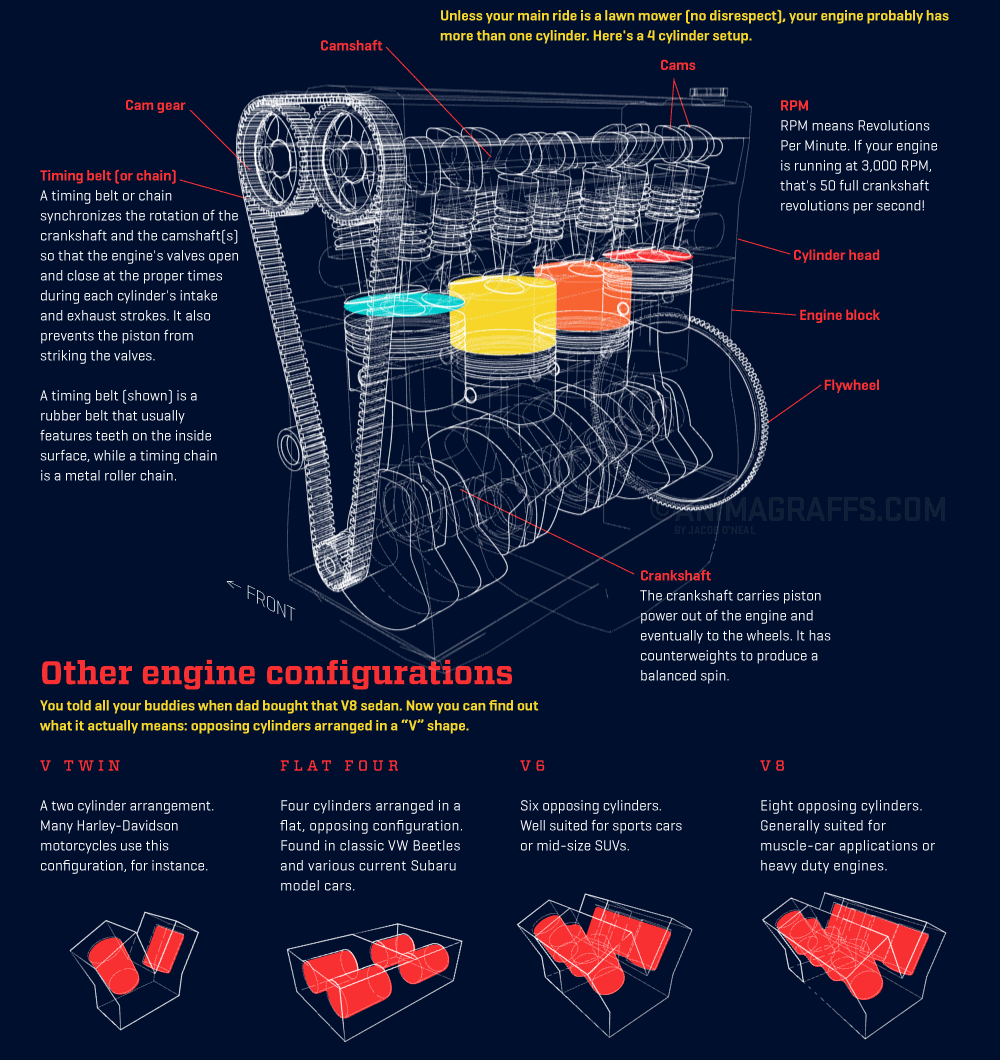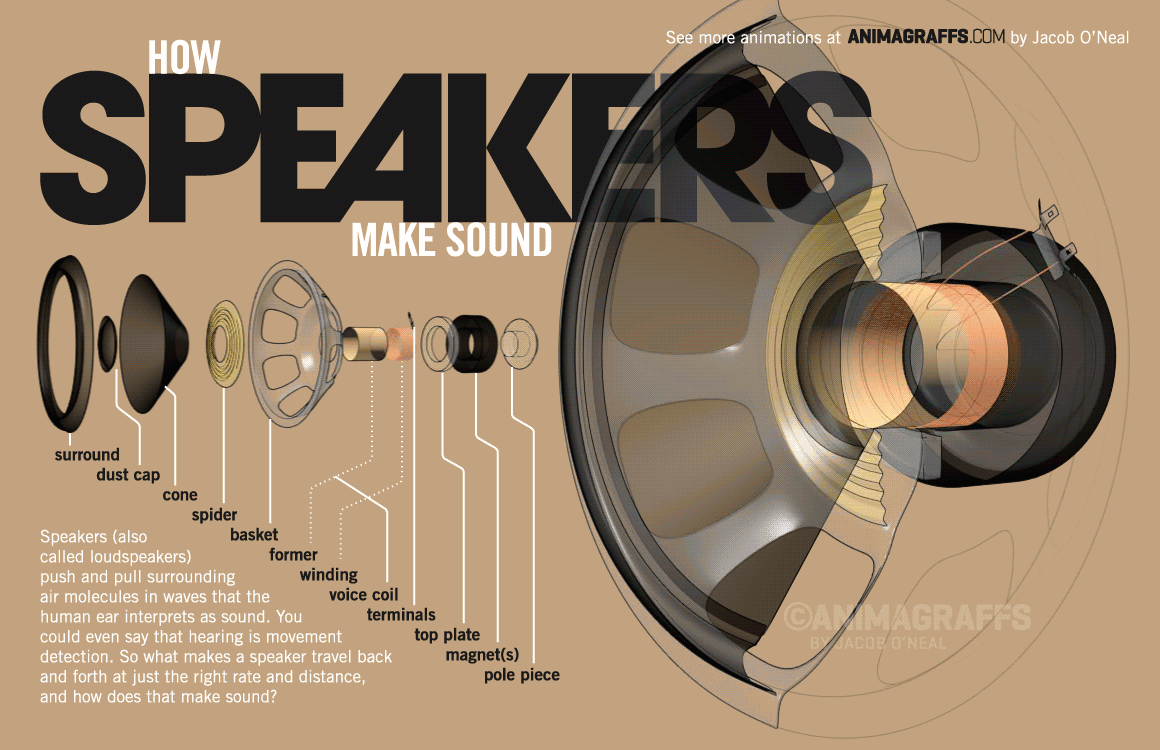Jacob O’Neal is a graphic designer, 3D artist, and creator of Animagraffs, animated infographics that explain how everyday things work.
Largely self-taught, O’Neal combined his interests in design, science, and engineering with social media savvy to create viral internet content that propelled him into a career working with some of the best known brands in the world.
Jacob was kind enough to answer some questions for us about his background, inspirations, and creative and technical processes.
What brought you to to the field of infographics and technical illustration?
I’ve always been interested in graphic design. Sometime in middle school they made us select career choices from what I now know was a very limited list, and graphic design was the only option on that list for an artist, besides maybe “architect.”
I’d been fiddling around with Photoshop since high school, designing websites etc. for family and friends, among other projects. I also obtained free 3D software in the mid 90s (a program called POV-ray) and it blew my mind that I could make computer generated art at home. I’d stay up all night figuring things out. My first scene was made using simple code to put primitive objects (like spheres and cubes) into place, and “subtract” these shapes from each other to create futuristic vehicles. I later learned of 3D modeling software for building 3D meshes (the wireframes under every 3D model) and that further blew my mind.
I attended college for a year and a half around 2001 and some in 2003. When I finally got past general classes into the graphic design focus, my teacher had us read a book of interviews as part of class material. Many of these interviewed pro designers said right in the interview they either didn’t go to college or dropped out! I was already jaded by all the busywork and have also always had a strong entrepreneurial spirit. So — I quit attending college.
How did your animated infographics project, Animagraffs start? Where has it taken you?
My first design jobs were in the marketing sphere. I like to say I “came up” on the proverbial streets of the design world, designing the equivalent of “made for TV” ads. I can’t say I’d ever want to return to work for those companies; many folks there had dubious morals. However, I learned their business inside and out, and like it or not, they were always early adopters of every new technology and practice. They deeply understood search engines and social media before everyone else.
Once I realized how my employers were using my work as a business model from start to finish, I felt confident I could do it myself, and decided to publish my own infographics. But instead of slinging bogus diet pills, I wanted to bring back high art and science in an entertaining format. Like the cutaway art and books I loved as a kid: for example, Stephen Biesty’s works.
And most importantly: I wanted to create a space online where things could be as objectively true as possible. If I lie in explaining something, I’ve simply explained it wrong. There’s little room for hype and other marketing tricks. So many folks in the working world don’t believe it’s possible to have success without manipulation and trickery. I wanted to prove it’s just the opposite: that lasting success comes from unyielding dedication to the truth.
I published a few early animated graphics that went viral on a mild scale. And then, in 2013, I decided to download the free Blender 3D software after about 15 years absence from any 3D art, and use a project as motivation to re-learn 3D. I was already full-time freelance at that point and had a natural lull in client work. Instead of hitting up contacts looking for projects, I took about a month to dedicate to my own project.
The result: the Car Engine graphic. I uploaded it on my personal portfolio site and then put a link out on a few subreddits (sub forums of the massive online social site Reddit). I got 30k visitors in the first day, effectively crashing my site! It was incredible, and felt like an event I’d been building up to my whole life. It’s still the #1 spot if you search for “How a car engine works”, 6 years later.
I created Animagraffs.com with proper sturdy hosting to handle big traffic, and set to work creating projects whenever time allowed. There’s still only a handful of things on the site, but I’m proud of everything there. Many of my projects have gone viral as now I have a fanbase that watches the site for new work.
As a junior designer suffering under the reality that my decisions rarely mattered, I had a seemingly distant dream: I wanted to be respected, and have people come to me as partners, offering work I could be proud of. I’m happy to say that’s how things are for me now. It’s incredible! I’ve worked with so many worldwide brands at this point. They usually email me with projects already in mind, having seen my work. I just do what I do, they compensate me accordingly, I’m proud of my work and clients are very happy to have impactful, unique, high quality art.
What is your process for creating an Animagraff?
For subjects, there’s so many possibilities that I usually select something popular that I might be interested in learning too.
Research comes first. I find that most diagrams we’ve been shown as educational models are poor indeed — possibly hastily drawn by scientists who favored numbers and thick manuals over paltry “cartoons” as they call visual diagrams in the scientist world. At any rate, to actually understand a subject I have to dig deep for weeks at a time, in places that few venture. Patent drawings, forums where engineers/pilots/mechanics hang out, library books that have info not available anywhere online, and so forth.
With a prepared research brief I begin to build the 3D model. That can take a month or more in itself, especially for more in-depth subjects.
I use Blender 3D for most of my process, from creating models themselves, to texturing and adding effects. I’ve been aware of Blender since around 2005, and relearned it in 2013 as part of the Car Engine project. I use various Adobe software for layout and video/gif export.
Thank you to Jacob O’Neal for sharing his work and insights.
You can view his work at JacobONeal.com or at Animagraffs.com




Very unique and beneficial information is provided. I really got to learn a lot from this. I love to read and write regarding patent drawings and illustration. I have a website regarding patent illustrations. If you have good interest in patent drawings then my website is for you. I am sure you will also find something new from my website.
I’m very interested in learning about it I always love to know how much Interesting can be to know how to Create a beautiful Car Engine
Hi. We would like to hire you to prepare a training animagraph for our company.
Possible?
Please let me know. Thanks. John.
Absolutely AWESOME videos !!! Great job Mr. O’Neal. I’m hooked now, very well produced and narrated !!!!